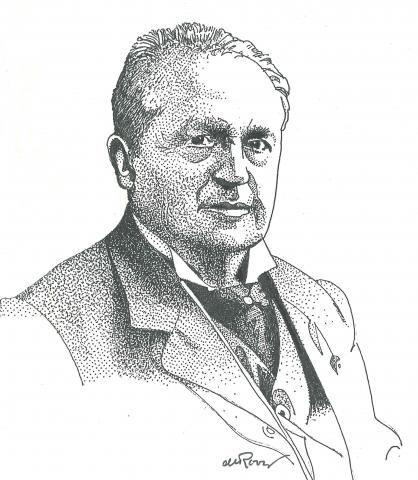A revised and updated version of
Abraham Kuyper: An Annotated Bibliography 1857-2010 by Tjitze Kuipers (2011)
You can buy a printed edition of this book on the site of the publisher.
1895
The purpose of this edition of the Bible was to produce a readable revision of the Dutch Authorized Version (1637) by updating the antiquated language of the seventeenth-century edition with modernized spelling and diction. The revision was also intended to be a scholarly edition based on the original text of the translation, the integrity of which had been lost due to arbitrary editorial changes throughout the centuries. The text that Kuyper chose as the basis of the revision was the Dutch Authorized Version published in 1657 by the Widow of Paulus Aertsz van Ravesteyn in Amsterdam—which was generally considered to be the most reliable edition of the Dutch Authorized Version. F.L. Rutgers completely revised the so-called kanttekeningen [annotations] to make them more accessible to contemporary readers. The annotations were also made more readable by moving them out of the margins and printing them as footnotes at the base of every column. The alphabetical index was dropped as incomplete, unnecessary, and too time-consuming to revise. Kuyper introduced this new edition of the Bible in De Heraut, no. 924, September 8, 1895 (see also 1929.04, pp. 302–307).
The illustrated copies contain reproductions of prints (copper engravings) by Romeyn de Hooghe (1646–1708). These reproductions were made from the engravings in Alle de voornaamste historiën des Ouden en Nieuwen Testaments. Verbeeld in uytstekende konst-platen door den wyd-beroemden Heer en Mr. Romeyn de Hooge [All the principal histories of the Old and New Testament. Illustrated with excellent artistic plates by the world-renowned master and gentleman, Romeyn de Hooghe], which was published by Jacob Lindenberg (Amsterdam, 1703). The initial at the beginning of each biblical book is incorporated into a small tableau inspired by that book. There are two pages of depictions of biblical antiquities and four pages of maps, all drawn by Prof. J. Woltjer. The firm J. Wolters, Groningen, used chromolithography to print the maps and lithography to print the biblical antiquities. The edition also includes a genealogical register for names and dates (births, baptisms, marriages, and deaths). The locations of the illustrations and the genealogical register differ from copy to copy.
The oversized and annotated edition was intended for use in the family room, in studies, and in the pulpit. This new, revised edition became known as the Flakkeesche Bijbel. Smaller, more manageable editions were also soon published (see 1896.11 and 1898.10). After finishing this project, Kuyper judged it possible that the Synod of the Reformed Churches would appoint deputies to look over the revision and recommend it for official use (cf. De Heraut, no. 924, September 8, 1895). He was, however, disappointed in this hope.

